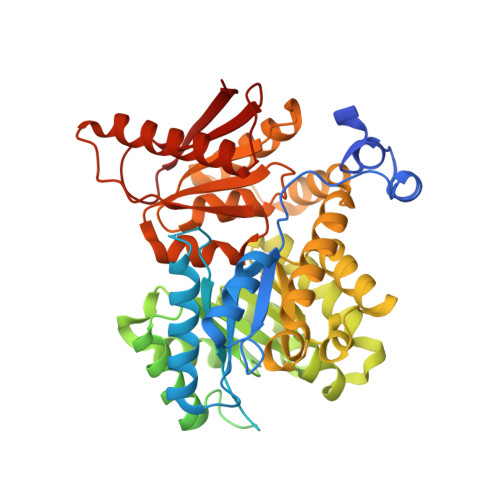Changes in the allosteric site of human liver pyruvate kinase upon activator binding include the breakage of an intersubunit cation-pi bond.
McFarlane, J.S., Ronnebaum, T.A., Meneely, K.M., Chilton, A., Fenton, A.W., Lamb, A.L.(2019) Acta Crystallogr F Struct Biol Commun 75: 461-469
- PubMed: 31204694
- DOI: https://doi.org/10.1107/S2053230X19007209
- Primary Citation of Related Structures:
6NN4, 6NN5, 6NN7, 6NN8 - PubMed Abstract:
Human liver pyruvate kinase (hLPYK) converts phosphoenolpyruvate to pyruvate in the final step of glycolysis. hLPYK is allosterically activated by fructose-1,6-bisphosphate (Fru-1,6-BP). The allosteric site, as defined by previous structural studies, is located in domain C between the phosphate-binding loop (residues 444-449) and the allosteric loop (residues 527-533). In this study, the X-ray crystal structures of four hLPYK variants were solved to make structural correlations with existing functional data. The variants are D499N, W527H, ¦¤529/S531G (called GGG here) and S531E. The results revealed a conformational toggle between the open and closed positions of the allosteric loop. In the absence of Fru-1,6-BP the open position is stabilized, in part, by a cation-¦Đ bond between Trp527 and Arg538' (from an adjacent monomer). In the S531E variant glutamate binds in place of the 6'-phosphate of Fru-1,6-BP in the allosteric site, leading to partial allosteric activation. Finally, the structure of the D499N mutant does not provide structural evidence for the previously observed allosteric activation of the D499N variant.
Organizational Affiliation:
Department of Molecular Biosciences, University of Kansas, 1200 Sunnyside, Lawrence, KS 66045, USA.



















